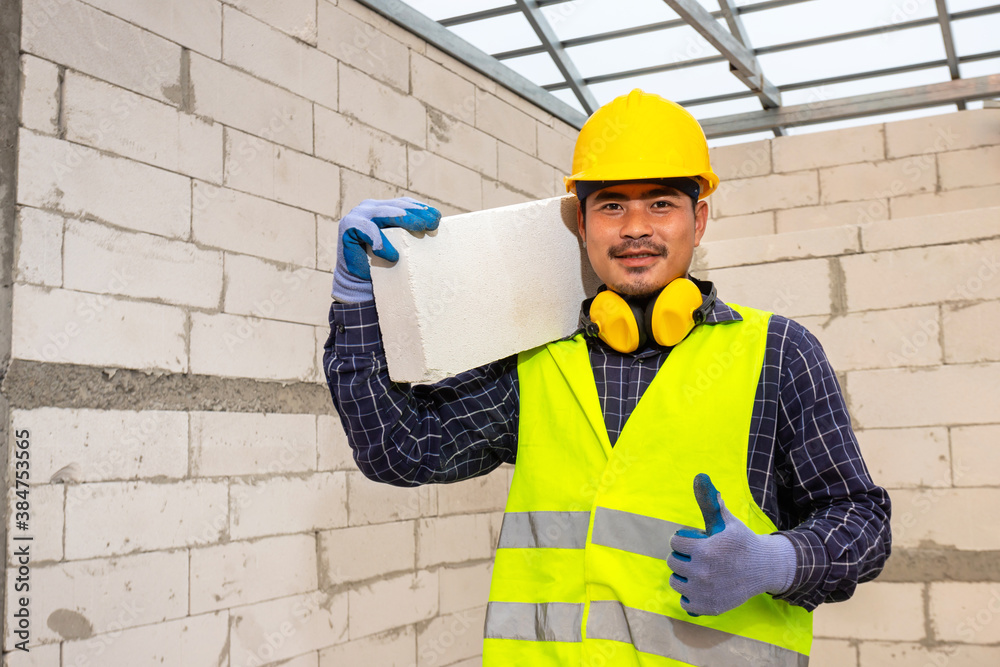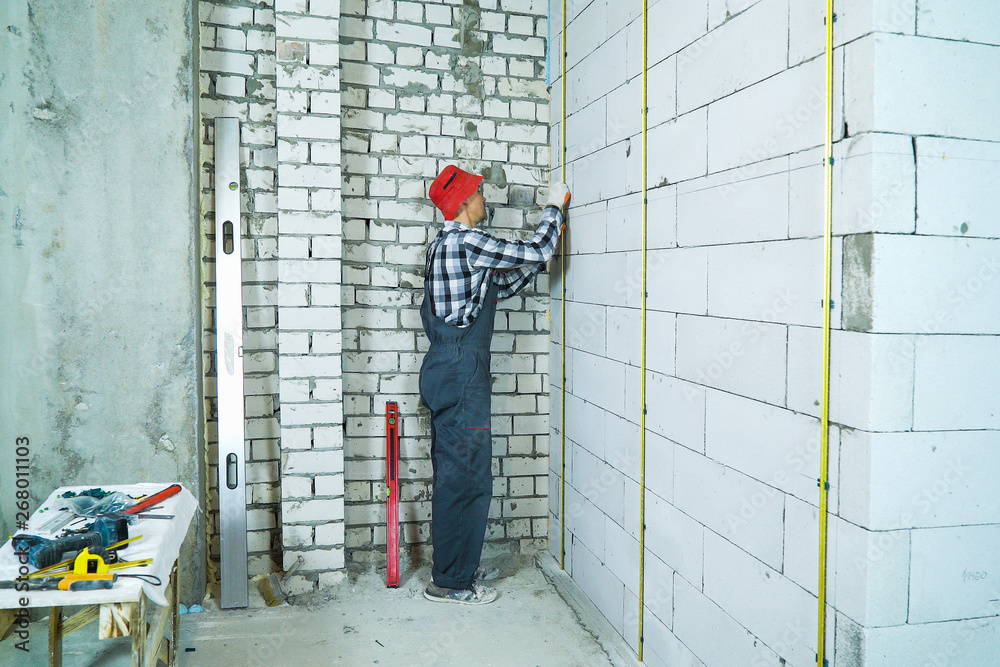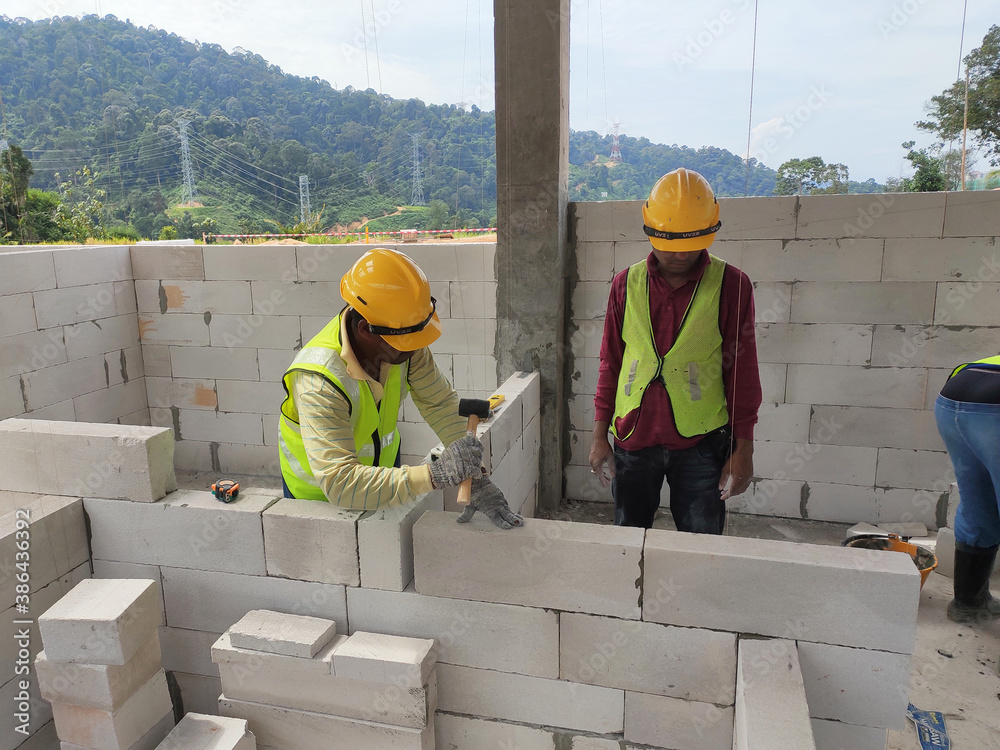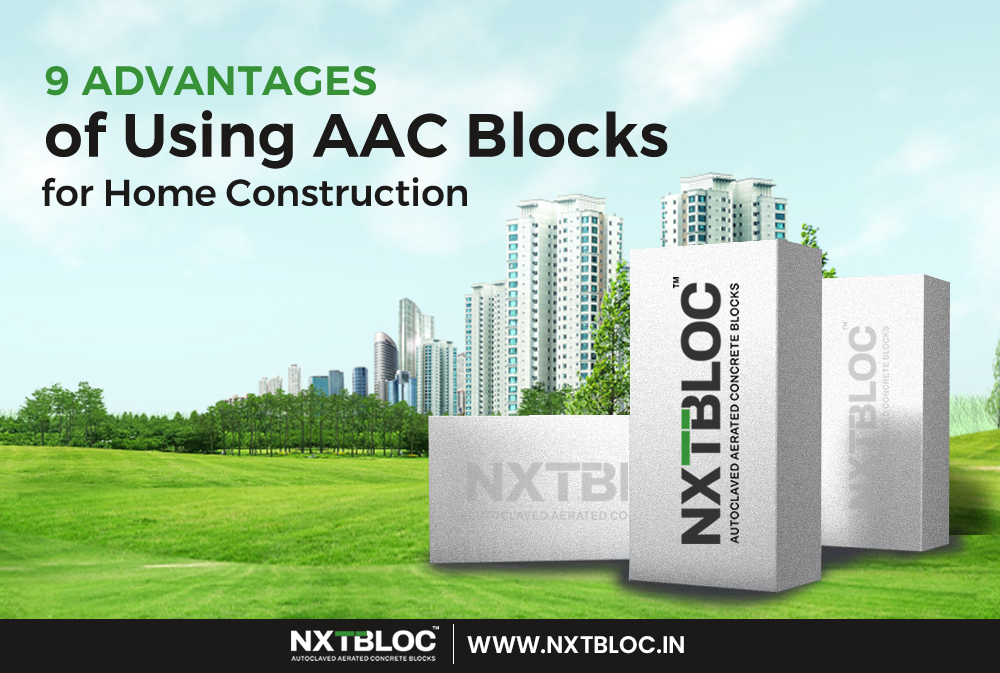In today’s dynamic world of construction, a material gaining widespread recognition is AAC (Autoclaved Aerated Concrete) blocks. These innovative building blocks offer many advantages, making them a compelling choice for modern home construction.
Let’s delve into the key aspects that make AAC blocks a game-changer.
Table of Contents
I. Introduction of AAC Blocks
A. Brief Overview of AAC Blocks
AAC blocks are cutting-edge construction materials known for their exceptional qualities, combining lightness with strength. These precast concrete blocks are revolutionizing the way homes are built, offering a range of benefits that go beyond conventional building materials.
B. Growing Trend in Home Construction
As the demand for sustainable and efficient building practices rises, AAC blocks have become a cornerstone in the construction industry. Homeowners and builders alike are increasingly turning to these blocks for home construction that are not only aesthetically pleasing but also environmentally friendly.

II. Understanding AAC Blocks
A. Definition and Composition
AAC blocks are crafted from sand, cement, lime, and aluminium powder, undergoing a unique autoclaving process that introduces air bubbles into the mixture. This results in a lightweight yet robust material with a distinctive cellular structure.
B. Manufacturing Process
The meticulous manufacturing process involves curing the blocks in high-pressure autoclaves, enhancing their strength and durability. This process not only ensures uniformity but also contributes to the material’s eco-friendly credentials.
C. Sustainability Aspects
AAC blocks are environmentally responsible, utilizing fly ash, a byproduct of coal combustion, in their composition. This repurposing of industrial waste reduces the environmental impact and enhances the blocks’ insulation properties.
III. Lightweight Advantage
A. Reduced Structural Load
One of the primary advantages of AAC blocks is their lightweight nature, significantly reducing the overall structural load on a building. This characteristic not only simplifies the home construction process but also enables the creation of more intricate architectural designs.
B. Ease of Handling and Transportation
Builders and contractors benefit from the ease with which AAC blocks can be handled and transported. The lightweight nature ensures quicker installation, leading to increased efficiency and reduced labour costs.
C. Foundation and Framing Benefits
The reduced weight of AAC blocks places less strain on the foundation, contributing to the long-term stability of the structure. Additionally, the ease of framing with these blocks allows for versatile designs without compromising on strength.

IV. Thermal Insulation Properties
A. Cellular Structure and Heat Resistance
AAC blocks boast a cellular structure that provides excellent thermal insulation. This inherent quality helps maintain comfortable temperatures within homes, reducing reliance on heating and cooling systems and consequently lowering energy consumption.
B. Energy Efficiency in Climate Control
The superior thermal insulation properties of AAC blocks translate into energy-efficient home constructions. Residents enjoy a more stable indoor climate throughout the year, leading to substantial energy savings and a reduced environmental footprint.
C. Impact on HVAC Systems
AAC blocks contribute to the efficiency of heating, ventilation, and air conditioning (HVAC) systems by minimizing the load on these systems. This results in lower energy bills for homeowners and a reduced carbon footprint for the entire community.
V. Sound Insulation and Acoustic Performance
A. Porous Structure and Noise Reduction
The porous nature of AAC blocks acts as a natural sound insulator, creating a serene living environment. Homeowners can enjoy a peaceful retreat from external noise, fostering a more relaxed and comfortable atmosphere.
B. Creating Tranquil Living Spaces
AAC blocks enable home construction with superior acoustic performance, making them ideal for urban or densely populated areas. The ability to mitigate noise ensures that residents enjoy a tranquil living space despite external disturbances.
C. Enhanced Privacy in Multi-Unit Dwellings
In multi-unit dwellings, where privacy is often a concern, AAC blocks provide an effective solution. The sound insulation properties contribute to enhanced privacy, fostering a sense of seclusion within shared living spaces.
VI. Fire Resistance and Safety
A. Inherent Fire Retardant Properties
AAC blocks are inherently fire-resistant, providing an additional layer of safety for homeowners. This characteristic is particularly crucial in regions prone to wildfires or areas where fire safety regulations are stringent.
B. Compliance with Building Codes
Builders appreciate the peace of mind that comes with using AAC blocks, as they inherently comply with stringent building codes related to fire safety. This ensures a smooth home construction process without compromising on safety standards.
C. Protection of Valuables and Lives
Beyond meeting regulatory requirements, the fire-resistant nature of AAC blocks protects not only the structure itself but also the valuables and lives within. This advantage adds a layer of security that goes beyond the visual appeal of a well-constructed home.
VII. Environmental Sustainability
A. Reduced Carbon Footprint
AAC blocks contribute to environmental sustainability by utilizing fly ash, a byproduct that would otherwise be discarded. This eco-friendly approach reduces the carbon footprint associated with traditional home construction materials.
B. Recyclability and Reusability
In addition to their eco-friendly composition, AAC blocks are recyclable and reusable, minimizing waste and promoting a circular economy. This aspect aligns with the growing emphasis on sustainable building practices.
C. Contributing to Green Building Practices
Homeowners can take pride in contributing to green building practices by choosing AAC blocks. The use of recycled materials and the energy-efficient properties of AAC contribute to the overall sustainability of the home construction environment.
VIII. Durability and Longevity
A. Resistance to Weathering and Erosion
AAC blocks exhibit remarkable durability, with resistance to weathering and erosion. This characteristic ensures that homes constructed with AAC blocks withstand the test of time, maintaining their structural integrity in various environmental conditions.
B. Low Maintenance Requirements
Homeowners benefit from the low maintenance requirements of AAC blocks. The material’s resistance to mould, pests, and deterioration minimizes the need for frequent repairs, translating into long-term cost savings.
C. Lifespan Comparison with Traditional Building Materials
Comparative studies reveal that home construction with AAC blocks has a longer lifespan than those built with traditional materials. This longevity is a testament to the enduring qualities of AAC in the face of environmental challenges.

IX. Cost-Efficiency in the Long Run
A. Initial Investment vs. Lifecycle Savings
While the initial investment in AAC blocks may seem higher than some traditional materials, the long-term savings in energy costs, maintenance, and potential repairs make them a cost-effective choice for homeowners.
B. Lower Energy Bills and Maintenance Costs
The thermal insulation properties of AAC blocks have contributed to lower energy bills over the years. Additionally, the reduced maintenance requirements result in further cost savings, making them a financially savvy investment.
C. Return on Investment for Homeowners
Homeowners can expect a favourable return on investment when choosing AAC blocks for construction. The combination of energy savings, durability, and minimal maintenance costs enhances the overall value and longevity of the property.
In conclusion, the advantages of using AAC blocks for home construction extend far beyond the initial stages of building. From their lightweight nature and thermal insulation properties to their environmental sustainability and cost-efficiency, AAC blocks stand as a testament to the evolution of construction materials. As the demand for sustainable and efficient building practices continues to rise, NXTBLOC AAC blocks emerge as a frontrunner, reshaping the landscape of modern home construction.
